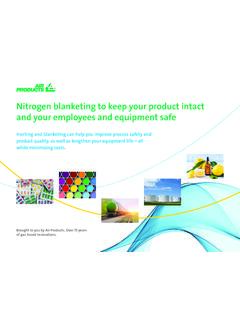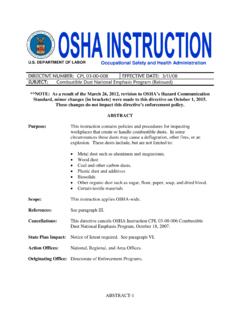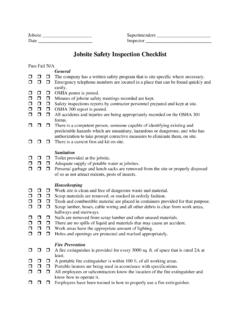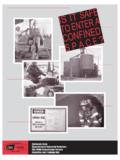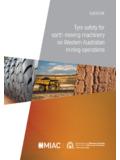Transcription of Final Written Exam Answers - Fire in the Field
1 Final Exam Answers ICS I-100. Score out of possible 30. 1. The ability to communicate at an incident is critical. In ICS, an essential method for ensuring effective communication is to: 1 point A. Forward all status changes through the Communications Unit. B. Use common terminology and clear text C. Use the 10-code for all communications with the division D. Pass on essential information only 2. Carrying out tactical fieldwork is a function of which section? 1 point A. Operations Section B. Planning Section C. Logistics Section D. Finance/Administration Section 3. In a fully activated ICS organization, the Helispot Manager will report to 1 point A. Air Support Group Supervisor B. Facilities Unit Leader C. Helibase Manager D. Ground Support Unit Leader 4. The Public Information Officer is responsible for 1 point A.
2 Writing the IAP and sharing it with the media B. Advising the IC on issues related to information sharing and media relations C. Ensuring that all communication devises (radios, cell phone, pagers) are working properly D. Briefing incoming agencies about the incident 5. Which of the following factors are used to determine where a facility should be located? 1 point A. Environmental and cultural impact B. Proximity to the incident or event C. Proximity to hospitals D. A and B. 6. The Incident Commander is responsible for 1 point A. Overall management of the entire event B. Developing incident objectives C. Planning strategies and implementing tactics D. All of the above ANSWER KEY: ICS I-100 Copyright 2007 Interactive Training Media, Inc. Page 1. 7. ICS is a component of NIMS.
3 What is NIMS? 1 point A. The Nationwide Incident Management Sequence B. The Nationally Instigated Management Series C. The National Institute for Materials Science D. The National Incident Management System 8. Which ICS Section manages the Base? 1 point A. Operations Section B. Planning Section C. Logistics Section D. Structural Protection 9. ICS organizational resources include 1 point A. Section, Division, Group, Branch, Task Force, Strike Team, Single Resources B. Command, Operations, Planning, Logistics, Finance/Administration C. Incident Command Post, Base, Camps, Staging Area, Helibase, Helispots D. All of the above 10. The first step to take when arriving at an incident is to 1 point A. Meet with the Finance Section Chief B. Check in C. Contact the Planning Section Chief D.
4 Obtain an IAP. 11. A Task Force is made up of the following type resources 1 point A. A combination of resources B. The same type and kind of resources C. Tactical and strategic resources D. Mobilized resources 12. When entering the time on incident forms, you should 1 point A. Use 24-hour military time B. Use standard time ( and ). C. Only fill out date; time is unnecessary D. Use standard time from your home unit 13. Within ICS, the span of control for any supervisor at an incident should range from 1 point A. One to three subordinates B. One to ten subordinates C. Three to seven subordinates D. There is no specified span of control ANSWER KEY: ICS I-100 Copyright 2007 Interactive Training Media, Inc. Page 2. 14. Which of the following type incidents/events requires a Written Incident Action Plan (IAP) as mandated by Federal Code (29, CFR, 1910,120)?
5 1 point A. Natural disasters B. Hazardous materials incidents C. Search and rescue missions D. Biological outbreaks 15. Which of following refers to the process in which incident command responsibility is passed from one individual to another? 1 point A. Transfer of Command B. Changing of the Guard C. Exchange of Command D. Passing the Baton 16. Which of the following tasks should you complete as part of the demobilization process? 1 point A. Complete all work assignments B. Brief replacements, subordinates, and supervisor C. Return any incident-issued equipment or other nonexpendable supplies D. All of the above 17. Setting up food services is a function of which section? 1 point A. Operations Section B. Planning Section C. Logistics Section D. Finance/Administrative Section 18.
6 Which incident facility is used to house out-of-service resources? 1 point A. Staging Area(s). B. ICP. C. Base D. Helispot 19. When at an incident, all supervisors must maintain a daily _____, containing the names of assigned personnel and operational shift activities. 1 point A. ICS-213, General Message Form B. ICS-214, Unit Log C. ICS-207, Organizational Chart D. ICS-219, Resource Status Card ANSWER KEY: ICS I-100 Copyright 2007 Interactive Training Media, Inc. Page 3. 20. Management by objectives is an important feature of ICS. Which of the following procedures is associated with management by objectives? 1 point A. Designating a deputy B. Establishing length of the operational period C. Documenting results to measure performance D. Determining a name for the incident 21.
7 What should you do if you observe a sexual harassment situation at an incident? 1 point A. Avoid getting involved B. Report all problems to your supervisor C. Step in solve the problem yourself D. Go directly to the agency representative or line officer and report the problem 22. A Strike Team is made up of the following type resources 1 point A. A combination of resources B. The same type and kind of resources C. Tactical and strategic resources D. Mobilized resources 23. When possible, the ICP should be located 1 point A. In a vehicle for accessibility to the entire incident B. With the largest agency on multi-agency incidents C. Outside any potential hazard zone D. None of the above 24. The Liaison Officer serves as 1 point A. The point of contact for any assisting or cooperating agencies B.
8 The point of contact for all contractors C. The point of contact for all media and photographers D. The point of contact for all non-incident personnel 25. Which of the following statements best describes the Deputy Incident Commander? 1 point A. The Deputy Incident Commander supervises the Incident Commander B. The Deputy Incident Commander is only responsible for communicating with the media C. The Deputy Incident Commander is a training position D. The Deputy Incident Commander is fully qualified at the Incident Commander level ANSWER KEY: ICS I-100 Copyright 2007 Interactive Training Media, Inc. Page 4. 26. Determining whether to establish a Finance/Administrative Section is the responsibility of the 1 point A. Finance/Administration Section Chief B.
9 Incident Commander C. Procurement Unit D. Resource Unit Leader 27. All ICS resources are categorized according to their current availability. The three states of availability in ICS are 1 point A. Assigned, Available, Out of service B. Operational, En route, Inactive C. Mobilized, Stand-by, Demobilized D. In-force, In-reserve, Idle 28. Which of the following is a type of ICS command structure? 1 point A. Cohesive command B. Unified command C. Coach command D. Designated command 29. What are the five major functions around which ICS is organized? 1 point A. Command, Operations, Planning, Safety, Communications B. Command, Operations, Planning, Logistics, Communications C. Command, Operations, Planning, Logistics, Finance/Administration D. Command, Communications, Safety, Operations, Finance/Administration 30.
10 What are the three major activities of the Command Staff? 1 point A. Medical, Food, Supply B. Public Information, Safety, Liaison C. Helibase operations, Ground support, Base/Camp management D. None of the above ANSWER KEY: ICS I-100 Copyright 2007 Interactive Training Media, Inc. Page 5. Final Exam Answers Intro to Wildland Fire Behavior S-190. Score out of possible 50. 1. What are the three methods of heat transfer? 3 points Radiation Conduction Convection 2. What are the three components of the fire triangle? 3 points Oxygen Fuel Heat 3. What happens when oxygen is removed from the fire triangle? 2 points Combustion cannot occur 4. Matching: Draw an arrow from the term to its definition. 3 points SPOTTING Fire burning without flame and barely spreading.


